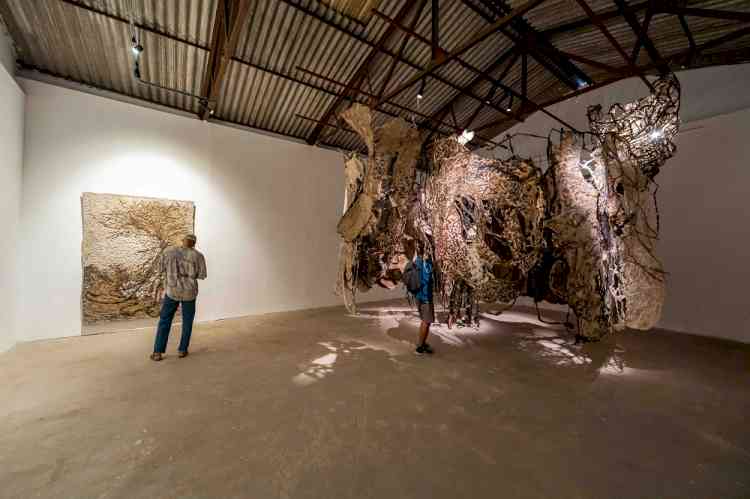Bile Duct Cancer: Causes, Symptoms, and Treatment Options

By Dr. Raj Nagarkar - Managing Director and Chief of Surgical Oncology & Robotic Services, HCG Manavata Cancer Centre, Nashik
In life, illness often serves as a poignant reminder of our shared humanity. And sharing the same sentiment, bile duct cancer, a rare yet formidable adversary, illustrates the importance of compassion and support. A stealthy conflict rages across the sensitive net of human connection: cholangiocarcinoma, or bile duct cancers, silently destroys the brilliant connections of our bodies. Cholangiocarcinoma, the medical term for bile duct cancer, is a rare and complex sort of most cancers that begins in the tubes that join the small intestine to the liver and gallbladder. The difficult early identity of this malignancy, which regularly establishes as signs at advanced stages, is what makes it so complex. Numerous research are presently being carried out to solve the riddle underlying the sickness. Nevertheless, chronic bile duct inflammation, primary sclerosing cholangitis (PSC), infections, and the development of stones within the ducts are some signs of potential triggers. It appears that these components work well together to create the perfect ecosystem.
The complexity of bile duct cancer is compounded by the restricted treatment choices available, including surgery, chemotherapy, and radiation, particularly when the cancer is identified in its advanced stages. Current research efforts are dedicated to finding the causes, risk factors, and mechanisms of bile duct cancer, highlighting the significance of early detection and consistent monitoring for individuals at increased risk. This emphasis aims to improve the chances of effectively managing this intricate and elusive disease.
Early detection of bile duct cancer is like catching a sneak thief before major damage is done, yet it is very difficult because there are no obvious symptoms noticed at first. However, as the cancer spreads, the body begins to exhibit distressing symptoms.
Causes of Bile Duct Cancer:
• Chronic inflammation of the bile ducts is commonly associated with bile duct cancer.
• Conditions that increase the risk include primary sclerosing cholangitis (PSC), bile duct stones, and infections.
• An elevated risk of bile duct cancer may also be caused by genetic factors and hereditary disorders.
Symptoms Of Bile Duct Cancer:
• Patients with bile duct cancer may experience significant and excessive weight loss, along with noticing dark urine, which appears darker than usual, and pale-coloured stools.
• Jaundice, resulting in yellowing of the skin and eyes, often accompanies persistent itching, while abdominal pain, commonly felt in the upper right side, may also be present.
• Patients might also feel fatigue, further resulting of tiredness and weakness, is frequently reported alongside the other symptoms of bile duct cancer
Diagnosis:
• A physical examination may be conducted to access general health and identify any signs of illness.
• To diagnose bile duct cancer, medical professionals employ a variety of imaging procedures, blood tests, and, occasionally, tissue samples.
• Advanced scans like CT, Ultrasound MRI play a pivotal role in visualizing the bile ducts and identifying any abnormalities.
• Endoscopic Retrograde Cholangiopancreatography (ERCP) involves the intersection of a flexible tube with a camera through the mouth and into the digestive tract examines the bile ducts.
• Once cancer is confirmed, staging helps determine the extent of cancer spread. This information is very crucial for planning an appropriate treatment
Treatment Options:
• Surgery: Surgical intervention, involving the removal of the tumour, part of the liver, or the entire affected bile duct, stands as a common and primary treatment for localized bile duct cancer.
• Liver Transplantation: A liver transplant may be considered as a possible treatment option in some circumstances, especially if the cancer is limited to the liver and fits certain requirements.
• Chemotherapy: Administration of drugs designed to shrink tumours before surgery or to manage the progression of advanced bile duct cancer represents another avenue of treatment.
• Targeted Therapy & Immunotherapy: Targeted therapies, homing in on specific molecules pivotal to cancer growth, come into play when other treatment modalities prove ineffective. This focused approach aims to disrupt the cancer's development at a molecular level.
Better results need a proactive approach since bile duct cancer frequently shows up slowly and is challenging to detect early. We should be better equipped to face this strong foe if we identify mild signs early on, such as constant itching, stomach discomfort, jaundice, or unexplained weight loss. At the same time, it is critical to stay current with state-of-the-art therapies since advancements in surgery, therapy, and precision drugs are continually changing the landscape of cancer treatment.


 City Air News
City Air News 









